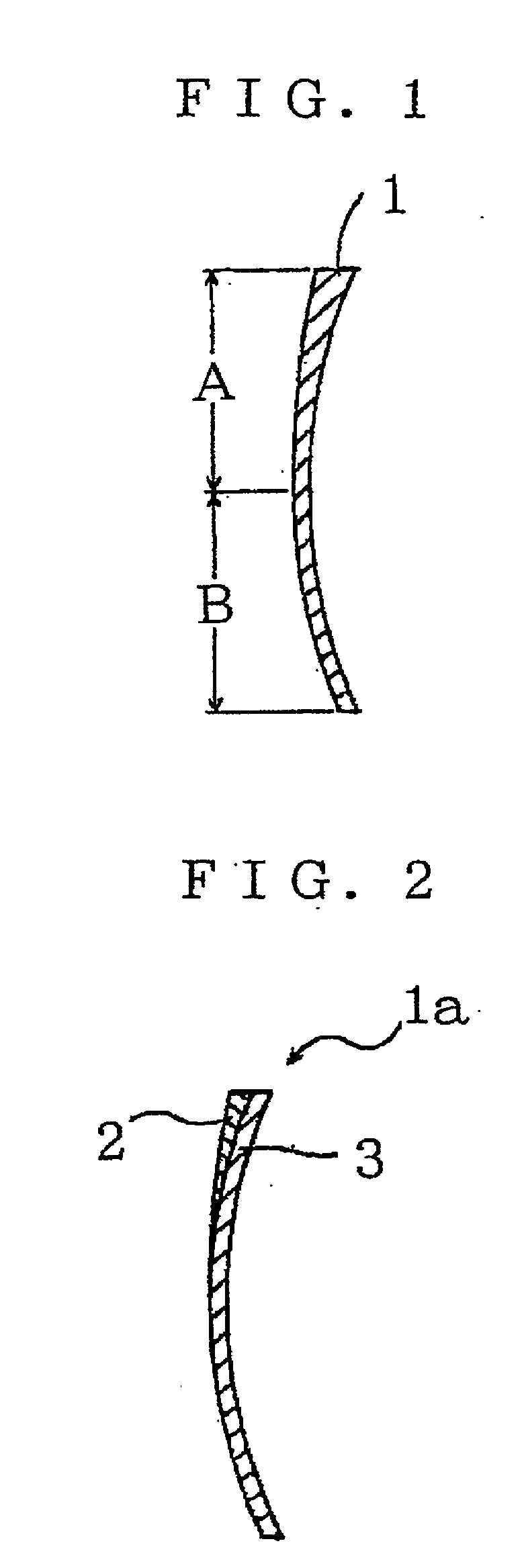Lens for eyesight correction glasses
a technology for lenses and glasses, applied in the field of lenses for eyesight correction glasses, can solve the problems of inability to focus on a nearby object, (or false nearsightedness), and students consult opticians
- Summary
- Abstract
- Description
- Claims
- Application Information
AI Technical Summary
Benefits of technology
Problems solved by technology
Method used
Image
Examples
Embodiment Construction
[0010] Embodiments of the present invention will be hereinafter described with reference to the drawings.
[0011] FIG. 1 is a sectional view taken perpendicularly to the optical axis of a lens 1 for eyesight correction glasses. The lens 1 is configured in such a manner that an upper portion A and a lower portion B are integrated with each other. The upper portion A is a minus lens in which the eye-side radius of curvature is shorter than the object-side one. The lower portion B is a portion having a constant thickness t and hence having no prism effect. Where a student wears glasses mounted with such lenses, he sees, for example, the blackboard during a class in a classroom through the upper portion A capable of eyesight correction. He sees a textbook or a notebook on the desk through the lower portion B having no eyesight correction ability. This is equivalent to viewing with the naked eye and hence no load is imposed on his eyes. They say that essentially it is preferable that the t...
PUM
 Login to View More
Login to View More Abstract
Description
Claims
Application Information
 Login to View More
Login to View More - R&D
- Intellectual Property
- Life Sciences
- Materials
- Tech Scout
- Unparalleled Data Quality
- Higher Quality Content
- 60% Fewer Hallucinations
Browse by: Latest US Patents, China's latest patents, Technical Efficacy Thesaurus, Application Domain, Technology Topic, Popular Technical Reports.
© 2025 PatSnap. All rights reserved.Legal|Privacy policy|Modern Slavery Act Transparency Statement|Sitemap|About US| Contact US: help@patsnap.com


